Related Research Articles

Samuel Johnson, often called Dr Johnson, was an English writer who made lasting contributions as a poet, playwright, essayist, moralist, critic, biographer, editor and lexicographer. He was a devout Anglican, and a committed Tory. The Oxford Dictionary of National Biography calls him "arguably the most distinguished man of letters in English history". James Boswell's Life of Samuel Johnson was selected by Walter Jackson Bate as "the most famous single work of biographical art in the whole of literature".

Hester Lynch Thrale Piozzi, a Welsh-born diarist, author and patron of the arts, is an important source on Samuel Johnson and 18th-century English life. She belonged to the prominent Salusbury family, Anglo-Welsh landowners, and married first a wealthy brewer, Henry Thrale, then a music teacher, Gabriel Mario Piozzi. Her Anecdotes of the Late Samuel Johnson (1786) and her diary Thraliana, published posthumously in 1942, are the main works for which she is remembered. She also wrote a popular history book and a dictionary. She has been seen as a protofeminist.
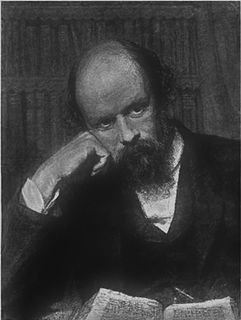
George Birkbeck Norman Hill was an English editor and author.

The Life of Samuel Johnson, LL.D. (1791) by James Boswell is a biography of English writer Dr. Samuel Johnson. The work was from the beginning a critical and popular success, and represents a landmark in the development of the modern genre of biography. It is notable for its extensive reports of Johnson's conversation. Many have claimed it as the greatest biography written in English, but some modern critics object that the work cannot be considered a proper biography. Boswell's personal acquaintance with his subject began in 1763, when Johnson was 54 years old, and Boswell covered the entirety of Johnson's life by means of additional research. The biography takes many critical liberties with Johnson's life, as Boswell makes various changes to Johnson's quotations and even censors many comments. Nonetheless, the book is valued as both an important source of information on Johnson and his times, as well as an important work of literature.

Elizabeth Johnson, familiarly known as "Tetty", was the widow of Birmingham merchant Henry Porter, and later the wife of English writer Samuel Johnson, whom she predeceased.

Anna Williams was a Welsh poet. She was a close companion of the writer Samuel Johnson, who said he was "very desolate" when she died. Cataracts left Williams blind or visually impaired in the 1740s, when Johnson took her under his wing and helped to support her. She joined his household until her death, apart from an interval of six years. In return, Williams supervised Johnson's household management and expenses. Besides poetry, she wrote an unfinished dictionary of philosophical terms and translated and published a French biography of the emperor Julian.
Messiah (1712) is a poem by Alexander Pope which Samuel Johnson translated into Latin in December 1728. This was the first poem of Johnson's to be published, and consists of 119 lines written in Latin verse. The whole translation was completed in two days and was submitted to Pope for appraisal.

The Vanity of Human Wishes: The Tenth Satire of Juvenal Imitated is a poem by the English author Samuel Johnson. It was written in late 1748 and published in 1749. It was begun and completed while Johnson was busy writing A Dictionary of the English Language and it was the first published work to include Johnson's name on the title page.
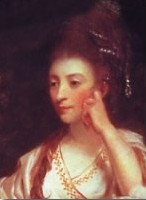
The Thraliana was a diary kept by Hester Thrale and is part of the genre known as table talk. Although the work began as Thrale's diary focused on her experience with her family, it slowly changed focus to emphasise various anecdotes and stories about the life of Samuel Johnson. The work was used as a basis for Thrale's Anecdotes of the Late Samuel Johnson, but the Thraliana remained unpublished until 1942. The anecdotes contained within the work were popular with Thrale's contemporaries but seen as vulgar. Among 20th-century readers, the work was popular, and many literary critics believe that the work is a valuable contribution to the genre and for providing information about Johnson's and her own life.
The Life of Samuel Johnson or Life of Samuel Johnson, LL. D. was written by John Hawkins in 1787. It was the first full biography of Samuel Johnson—with Thomas Tyers's A Biographical Sketch of Dr Samuel Johnson being the first short postmortem biography. Hawkins was a friend of Johnson, but many in Johnson's circle did not like him. After Johnson's death, Hawkins was approached to produce a biography on Johnson and an edition of his works. His biography described Johnson's life, including previously unknown details about his writing career, but it was plagued by digressions into unrelated topics. Hawkins's Life of Samuel Johnson came under swift attack from critics, from friends of Johnson, and from his literary rival, James Boswell immediately after its publication. Many of the critics attacked Hawkins for his lack of strict focus on Johnson's life or for his unfavourable depiction of Johnson in various circumstances.
The Anecdotes of the Late Samuel Johnson or the Anecdotes of the Late Samuel Johnson, LL.D. During the Last Twenty Years of His Life by Hester Thrale, also known as Hester Lynch Piozzi, was first published 26 March 1786. It was based on the various notes and anecdotes of Samuel Johnson that Thrale kept in her Thraliana. Thrale wrote the work in Italy while she lived there for three years after marrying Gabriel Piozzi.

An Essay on the Life and Genius of Samuel Johnson, LL. D. was written by Arthur Murphy and published in 1792. The work serves as a biography of Samuel Johnson and an introduction to his works included in the volume. Murphy also wrote a biography for Henry Fielding in a 1762 edition of his Works and a biography for David Garrick, the Life of David Garrick, in 1801.

The Plays of William Shakespeare was an 18th-century edition of the dramatic works of William Shakespeare, edited by Samuel Johnson and George Steevens. Johnson announced his intention to edit Shakespeare's plays in his Miscellaneous Observations on Macbeth (1745), and a full Proposal for the edition was published in 1756. The edition was finally published in 1765.
The health of Samuel Johnson has been a focus of the biographical and critical analysis of his life. His medical history was well documented by Johnson and his friends, and those writings have allowed later critics and doctors to infer diagnoses of conditions that were unknown in Johnson's day.
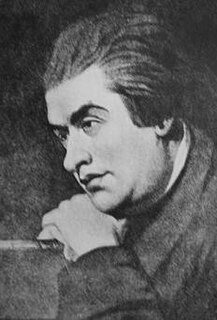
Samuel Johnson was an English author born in Lichfield, Staffordshire. He was a sickly infant who early on began to exhibit the tics that would influence how people viewed him in his later years. From childhood he displayed great intelligence and an eagerness for learning, but his early years were dominated by his family's financial strain and his efforts to establish himself as a school teacher.
Samuel Johnson, the celebrated British man of letters, wrote dozens of essays that defined his views on the politics of his time.
Robert William Chapman, usually known in print as R. W. Chapman, was a British scholar, book collector and editor of the works of Samuel Johnson and Jane Austen.
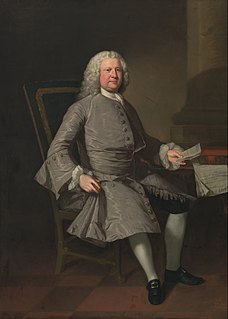
Thomas Osborne was an English publisher and bookseller noted for his association with author Samuel Johnson and his purchase of the library of Edward Harley, 2nd Earl of Oxford.
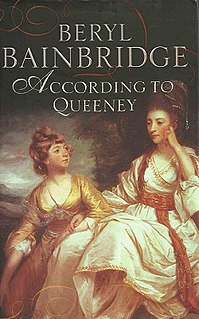
According to Queeney is a 2001 Booker-longlisted biographical novel by English writer Beryl Bainbridge. It concerns the last years of Samuel Johnson and his relationship between Hester Thrale and her daughter 'Queeney'. The bulk of the novel is set between 1765 and his death in 1784, with the exception of the correspondence from H. M. Thrale (Queeney) to Laetitia Hawkins from 1807 onwards, at the end of the chapters.
References
- Bate, Walter Jackson (1977), Samuel Johnson , New York: Harcourt Brace Jovanovich, ISBN 0-15-179260-7 .
- Bate, Walter Jackson (1955), The Achievement of Samuel Johnson, Oxford: Oxford University Press, OCLC 355413 .
- Boswell, James. Life of Johnson Vol. 3, London: 1887.
- Davis, Bertram. "Introduction" in * The Life of Samuel Johnson, LL. D., ed. Bertram H. Davis, pp. vii-xxx. New York: Macmillan Company, 1961.
- Hill, G. Birkbeck, editor, Johnsonian Miscellanies Vol 2. Oxford, 1897.
- Piozzi, Hester Lynch. Anecdotes of the Late Samuel Johnson in Johnsonian Miscellanies Vol 1. ed. Hill, G. Birkbeck, pp. 141 – 351. Oxford, 1897.
- Tyers, Thomas. A Biographical Sketch of Dr Samuel Johnson in Johnsonian Miscellanies Vol 2. Ed. G. Birkbeck Hill, pp. 335–381. Oxford, 1897.
- Wain, John (1974), Samuel Johnson, New York: Viking Press, OCLC 40318001 .